- +1 512-591-8295
- [email protected]
- Mon - Fri: 9:00 - 16:00
- +1 512-591-8295
- [email protected]
- Mon - Fri: 9:00 - 16:00
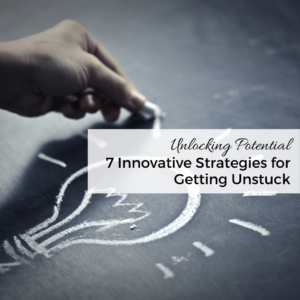
Do you ever feel like you’re hitting a wall in your professional projects, creative endeavors, or personal challenges? You’re not alone. It’s a common experience that can be daunting. But there’s good news: there are proven strategies to help you navigate through these moments. Drawing on the best practices I’ve learned over 30 years in marketing and project management, I’m here to share insights that can help you transform these challenges into opportunities for innovation and growth.
Reverse Engineering a Problem: One effective method I’ve discovered is reverse engineering. This involves envisioning your desired outcome first and then working backward to map out the steps to achieve it. It’s a strategy that brings clarity and structure, even in complex situations.
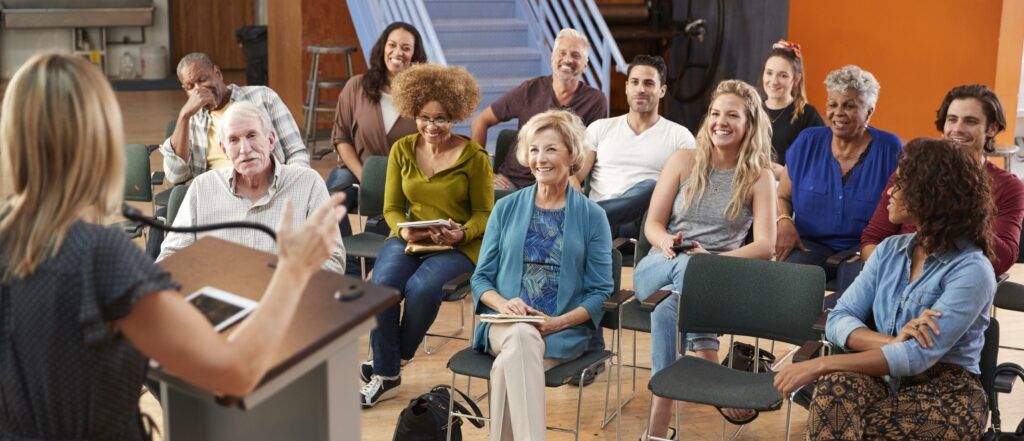
In my role leading a homeless coalition project as part of our multi-million-dollar community grant, the concept of reverse engineering was instrumental. Our annual planning involved local nonprofits, community agencies, churches, governmental bodies, and formerly homeless clients. We aimed to create comprehensive, community-based foundations, enabling each group to work seamlessly as part of a greater whole. This collaboration was essential in helping people in our community obtain and maintain housing.
Rather than focusing solely on our existing efforts, I steered the group to brainstorm with the end in mind, a popular concept advocated by Stephen Covey. We concentrated on our ultimate goal – forging a sustainable support system – and then methodically planned backward, pinpointing each necessary action.
We divided into random groups, each tasked with identifying resources that families who had never been homeless, were currently homeless, or had been homeless but were maintaining housing without struggle, possessed in their lives. These resources were crucial for keeping a roof over their heads during challenging life events. I guided them with comprehensive strategies, like examining everything in their daily life from morning until night or considering every person and place they encountered in a week.
The results were enlightening, with many similarities and some creative outliers that sparked new thinking among the participants. Their ideas, captured on post-it notes, were grouped on a wall for visual collaboration.
Next, similar organizations formed teams (e.g., all churches, all homeless shelters) to discuss current activities aligned with the brainstormed ideas, and more critically, to identify gaps they could feasibly address.
Finally, we reconvened as a larger group to explore creative ways the community could promote or integrate these strategies into our collective work.
This approach not only fostered collaboration and innovation but also led to a successful and impactful outcome, demonstrating the transformative power of starting with the end goal in mind.
Applying this strategy can be transformative, whether you’re developing a marketing plan, tackling a personal goal, or managing a team project. By dissecting your goal into manageable steps, you gain a clearer roadmap to success, turning overwhelming challenges into achievable targets.
Changing Perspectives for Creative Solutions: Sometimes, a fresh perspective is all you need to find a solution. By looking at a problem from a new angle, you might discover solutions that were previously hidden.

In tangible situations, like reorganizing a workspace, physically altering your viewpoint can be enlightening. In more abstract scenarios, consider approaching the problem as if you were someone else, perhaps a customer or a colleague. This shift in perspective can lead to innovative solutions.
Sometimes I will take a short break and do yoga … and literally turn myself upside down!
In a more general approach, we all tend to get wrapped up in our business (and points where we’re stuck) and it ends up with a very me, me, me focus … just by default. What I like to do in these cases, for my own business and with my clients, is always flip to consider the customer.
Flipping upside down by flipping focus to the customer first is always beneficial.
Whether dealing with a concrete issue or an abstract concept, changing perspectives can unlock creative and effective solutions. It’s a technique that fosters out-of-the-box thinking, essential in both personal and professional problem-solving.
Stimulating Creativity with New Environments: Changing your environment can be a powerful catalyst for creativity and problem-solving. This shift can break the monotony and refresh your cognitive processes.
Simple actions like taking a walk outside, rearranging your workspace, or even using virtual reality to explore new settings can significantly impact your ability to think differently. These changes don’t have to be drastic; even small adjustments can provide a fresh perspective.
I’ve personally found that changing my surroundings, be it a quiet spot in nature or a bustling coffee shop, often leads to breakthroughs in projects that seemed stagnant. It’s about giving your mind a new context in which to think and create.
I use a personal variation of the Pomodoro technique – what I’ve found that works best for me is 90 minutes of work followed by 60 minute “break”, repeated throughout the day. These built-in breaks provide me repeated ways to change my scenery. Sometimes this is as simple as moving to a different room in the house since I work from home (which can be built-in for me as I take my 60 minutes to complete chores around the house!); when I was CMO in the corporate world it might mean going into a different office or working for a bit in a conference room.
Sometimes I take a coffee break on the balcony, where I can feed “my” squirrels and ducks, or watch the golfers either get very happy or very sad on the 15th hole lol.
Refreshing the Mind Through New Activities: Engaging in activities unrelated to your current problem can be a surprisingly effective way to find solutions. Activities like reading, watching a movie, or even cooking can give your mind the space it needs to work in the background.
As many of your know, I’m an artist (I was an artist long before I was a marketer, drawing my first “selfie” at age 3!) When I need to have a super-creative break, I’ll grab the paint brushes, or even open a drawing app on my iPad.
Since I also ballroom dance, I might turn on music and do some dancing (not always ballroom!). Both art and music are great ways to get the creative juices flowing, which can often lead to an interesting breakthrough when I go back to whatever project has me stuck.
These activities can subconsciously influence your thinking and lead to innovative solutions. It’s about stepping away to allow your brain to make connections it might not make while actively focusing on the problem.
Seeking External Perspectives: Sometimes, an outside perspective is what you need to see things differently. Consulting others can provide insights you might have missed.
It can be especially hard for solo entrepreneurs who often have no one to brainstorm with our bounce ideas off.
This is why sometimes I ask ChatGPT to brainstorm with me. Sometimes this will quickly unlock ideas that are fresh or at least different enough to let me look at the project in a new light.
I also make sure that I have some entrepreneur friends who I’m close enough with that I can text for some feedback, and also why I offer Facebook Group where entrepreneurs can ask questions (even though most of the questions tend to come to me directly in Messenger). Sometimes you just need another brain to connect with that is not your own.
Reach out to colleagues, mentors, or even individuals outside your industry. Their fresh eyes can offer new angles and solutions, enriching your approach to problem-solving. Just keep in mind, when the question is directly related to your audience, if the person you’re consulting with is not in your target audience (or doesn’t have expertise in your particular audience), you’ll always want to do some additional research to make sure your fresh ideas are appropriate for the right people!
Managing Larger Problems by Segmenting: Tackling a large problem can be overwhelming. Breaking it down into smaller, manageable parts makes the process less daunting and more structured.
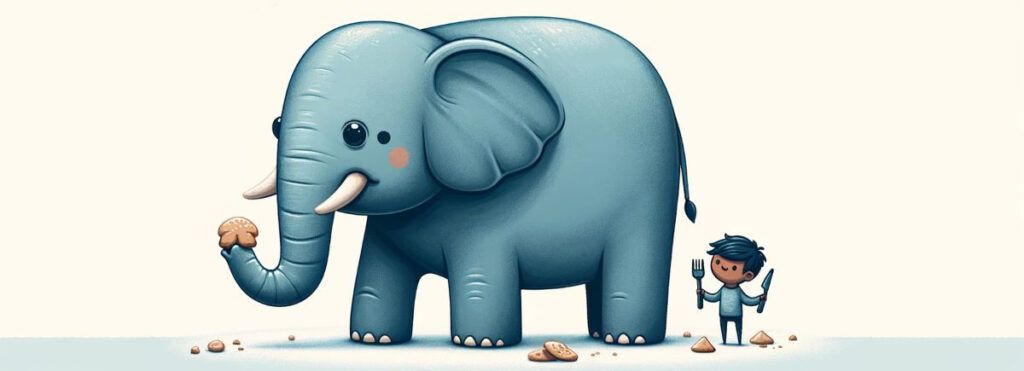
How do you eat an elephant?
One bite at a time.
Sometimes we get so overwhelmed by the perceived massive scope of a particular project or idea that we can freeze.
I’m a fan of Big, Hairy, Audacious Goals – BHAG (a term made popular by Jim Collins) when they’re synced with the business. But one thing about these types of goals is that they’re so big that it can be hard to figure out where to start.
And then this is the case, I say start anywhere. This is actually the same advice I give to new entrepreneurs who are so confused by marketing that they say they don’t even know where to begin. Start anywhere. Do any activity that is even remotely related to your BHAG. Sometimes simply taking action – any action – is enough to break open the dam of thoughts and ideas and help you get unstuck. Then start making a list or brain dump of all of the different things you’ll need to do.
Identify the most critical components and address them first. This method allows for more focused and efficient problem-solving, making even the most complex challenges manageable.
Engaging in Unrelated Activities: Sometimes, the best way to solve a problem is to take a step back and engage in something entirely different. Activities like meditation, exercise, or hobbies can provide the mental break needed to approach your challenge with renewed vigor.
One of my favorite mindless distractions is play my “work energy” list on Spotify, which I know will at least get my heart pumping (since I can’t help but dance, even while sitting in my chair), which will allow me to do some mindful work.
You can listen to it too … VWM Work Energy on Spotify. And let me know if I’m missing a song that needs to be included!
These strategies offer a range of approaches to overcome challenges. The key lies in experimentation to find what resonates with you. Remember, perseverance and creativity are your allies in navigating through difficulties. When faced with a challenge where you’re stuck, try these methods and watch how they can transform your problem-solving approach.
These resources blend learning with fun, helping you explore creative problem-solving in enjoyable and engaging ways!
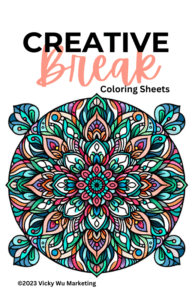
Step into a world of relaxation and creativity with our exclusive eBook, "Creative Break Coloring Sheets." Specially...
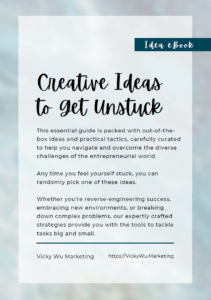
For entrepreneurs, facing challenges is inevitable, but overcoming them sets you apart. "Innovative Strategies for the Modern...
Get solid marketing strategies, designed for entrepreneurs on the track to 7-figures and beyond, right in your inbox.

This website uses cookies to ensure you get the best experience on our website. By continuing to use the website, you agree to our use of cookies. We do not share or sell your information. More info
